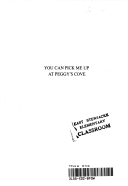
Through lively pictures and intriguing puzzles and games, Anno takes young children on a fun-filled journey through basic mathematical concepts, showing how skills are used every day.
Material appropriate for intermediate age groups

Through lively pictures and intriguing puzzles and games, Anno takes young children on a fun-filled journey through basic mathematical concepts, showing how skills are used every day.

Picture puzzles, games, and simple activities introduce the mathematical concepts of abstract thinking, circuitry, geometry, and topology.

Pictures, puzzles, games, and simple activities introduce the mathematical concepts of multiplication, sequence and ordinal numbering, measurement, and direction.

Sung, a brave man who is not afraid of ghosts, meets one on a dark road and tricks it into revealing its secret weakness.

Yue, a Chinese merchant, discovers the wisdom in passing along kindness, when Bear Face, the huge hairy man Yue has befriended, saves his life.

This book introduces Japanese words from A to Z. Book is designed to be read from back to front and from right to left.
A boy with a face so sad that nobody wants to look at him runs away with a caravan of giants to the city of dragons, where his sorrowful face is finally appreciated.
Good Wu marries a young woman who can change herself into a shell. Because of this ability, a cruel ruler wishes to own her. In order to escape and save herself and her husband, she must perform three wonders.

Alison Dare: Indiana Jones meets Lara Croft in fabulous, graphic adventures.Alison Dare is not your typical twelve-year-old. She’s the daughter of an archaeologist/adventurer and the masked hero known as the Blue Scarab. To top it off, she’s also the niece of an international super-spy; it’s no surprise that a craving for danger is in her blood! Unfortunately, her parents have locked her away at the prestigious St. Joan’s Academy for Girls, hoping that this would lead to a more “normal” life for their daughter. But despite all the strict rules at the school, Alison and her best pals – Wendy and Dot – somehow manage to find themselves involved in adventures that rival those of Alison’s globetrotting, planet-saving relatives. Whether it’s magic genies, super-powered bank robbers, or a dastardly baron bent on world domination,Alison Daredelivers the best thrills since Indiana Jones and more action than Lara Croft!

Ryan’s dad is having a midlife crisis. He went away for the summer to try to work through his problems, leaving his family behind. Ryan’s mother decides to send Ryan to Peggy’s Cove, the most beautiful cove in the world, for the summer to stay with his Aunt Fay, who owns and operates a store there. Peggy’s Cove is all right, Ryan thinks, if it weren’t so small and crowded with tourists.
Still, he manages to make friends. First, he befriends Drummer, a misfit. But hanging out with Drummer proves disastrous because it makes him behave in ways he never has before and gets him into trouble. Next, he finds friendship with fishermen Eddie and Wing Ding, who teach him how to fish. The time he spends with the two fishermen is the best moments of his visit. Even so, he still thinks of his father a lot and writes him a letter in hopes of getting his attention. After spending a summer apart, will their relationship ever be the same?